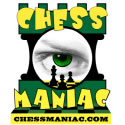THE AUTOMATON CHESS-PLAYER (PART II)

After a second tour of the leading cities of Europe, where it was received with unabated enthusiasm, in 1819 the Automaton was again established in London, under M. Maelzel. For some years it was exhibited in Canada and the United States, and was finally understood to have returned to New York, where it was shown in the autumn of 1845.
Meanwhile there were various attempts made to discover the secret. The ingenious inventor never pretended that the Automaton itself really played the game; on the contrary, he distinctly stated that "the machine was a bagatelle, which was not without merit in point of mechanism, but that the effects of it appeared so marvelous only from the boldness of the conception, and the fortunate choice of the methods adopted for promoting the illusion." It was surmised that the game was played either by a person inclosed in the chest, or by the exhibitor himself; yet the chest, being nearly filled with machinery, did not appear capable of accommodating even a dwarf; nor could any mechanical communication between the exhibitor and the figure be detected. It was then thought to be influenced by a magnet, which the exhibitor disproved by placing a strong and well-armed loadstone upon the machine during the game, which did not affect the moving power. The original conjecture, that the player was concealed in the interior, was then revived; and in 1789, Mr. J.F. Freyhere, of Dresden, published a pamphlet, in which he endeavored to explain by colored plates how the effect was produced; and he concluded "that a well-taught boy, very thin and tall of his age (sufficiently so that he could be concealed in a drawer almost immediately under the chess-board), agitated the whole."
In an earlier pamphlet, published in Paris in 1785, the writer supposed the machine was put in motion by a dwarf, a famous chess-player, his legs and thighs being concealed in two hollow cylinders, while the rest of his body was out of the box, and hidden by the robes of the figure.
Sir David Brewster, in his Natural Magic, describes the secret as shown in a pamphlet published anonymously, and the machine to be capable of accommodating an ordinarily-sized man; and he explains, in the clearest manner, how "the inclosed player takes all the different positions, and performs all the motions which are necessary to produce the effects actually observed." Sir David devotes eight pages of his work, with illustrative wood-cuts, to this explanation, and endeavors to show how the real player may be concealed in the chest, and partly in the figure: "as his head is above the chess-board, he will see through the waistcoat of the figure, as easily as through a veil, the whole of the pieces on the board; and he can easily take up and put down a chess-man without any other mechanism than that of a string communicating with the finger of the left hand of the figure," the right hand being within the chest, to keep in motion the wheel-work for producing the noise heard during the moves, and to move the head, tap the chest, etc.
Mr. Staunton also maintains that the chess-player who directed the Automaton was really hidden in the interior; that the machinery so ostentatiously exhibited was a sham, yet so contrived that it would collapse or expand, to suit the exigencies of the hidden agent's various positions; while the chest was exhibited, he was in the figure, and when the figure, he was in the chest. While conducting a game, he sat at the bottom of the chest, with a small pegged chess-board and men on his lap, and a lighted taper affixed, within reach were a handle by which he could guide the arm of the Automaton, an elastic spring for moving its fingers, and cord in communication with bellows for producing the sound of "Check." The most ingenious part of the contrivance remains to be told. M. Mouret, the celebrated chess-player, who directed the movements of the Automaton for some years, states that the concealed player was seated immediately under the chess-board of the Automaton, and from the under side, at every one of the sixty-four squares, was suspended by the finest silk a tiny metallic ball; and as each of the chess-men had a magnet inside, when it was placed upon a square, it drew up the ball beneath, while the balls beneath the other squares remained suspended. The pieces being arranged, the Automaton opened the game; and turning the handle of the arm of the figure, and putting in motion the finger-springs, he caused it to take up the piece to be played, which was indicated by the falling ball, and when it was placed upon a square, the ball was drawn up. He then repeated the move on the small board in his lap, and thus the game proceeded.
To be continued...
Read part I
Play free online chess!
--------------------------------------------------------------------------------
About the Author
This is from the book, "STORIES OF INVENTORS AND DISCOVERERS", by John Timbs (1860), which is in the public domain.



















0 Comments:
Post a Comment
<< Home